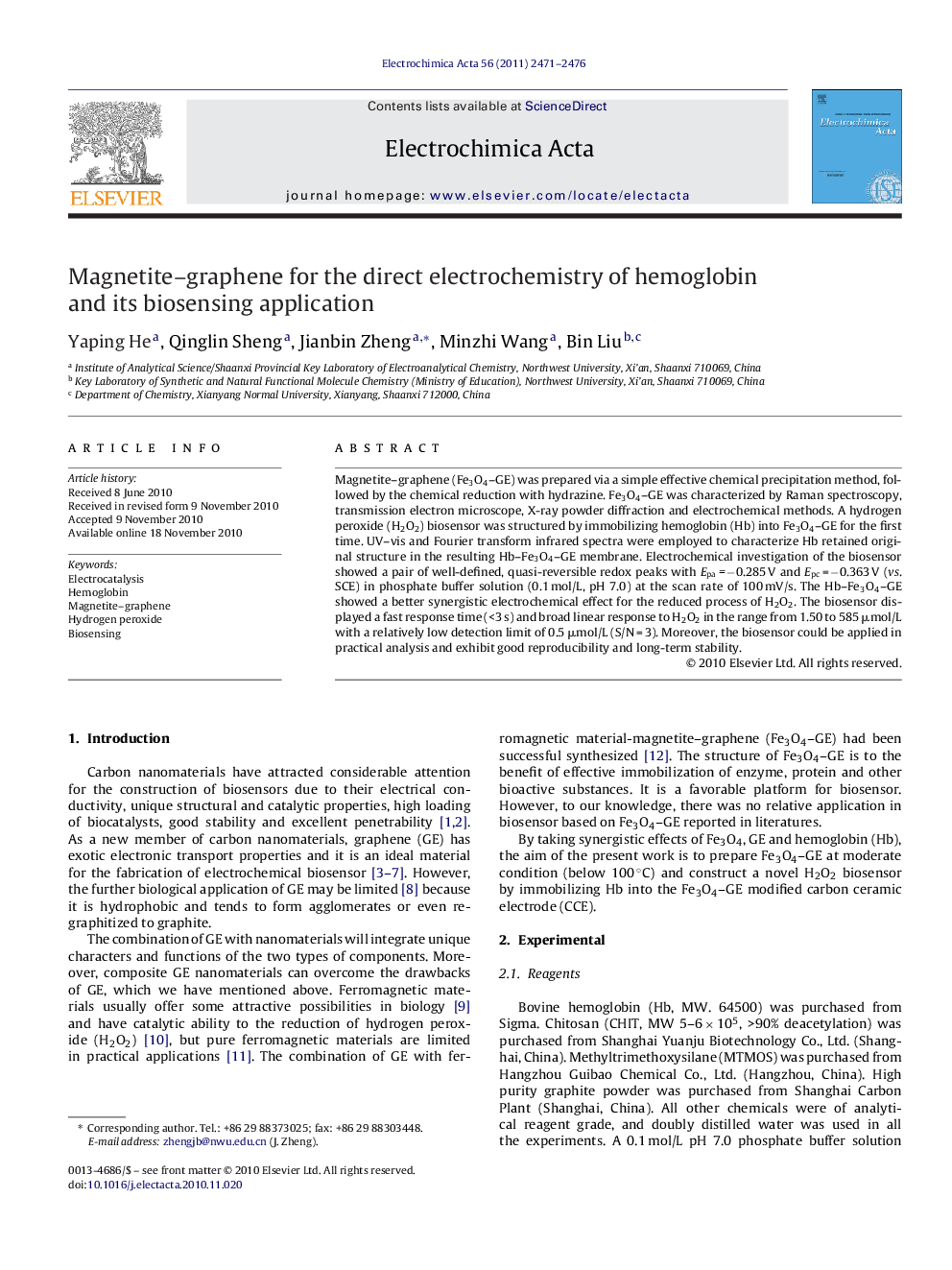| Article ID | Journal | Published Year | Pages | File Type |
|---|---|---|---|---|
| 10269199 | Electrochimica Acta | 2011 | 6 Pages |
Abstract
Magnetite-graphene (Fe3O4-GE) was prepared via a simple effective chemical precipitation method, followed by the chemical reduction with hydrazine. Fe3O4-GE was characterized by Raman spectroscopy, transmission electron microscope, X-ray powder diffraction and electrochemical methods. A hydrogen peroxide (H2O2) biosensor was structured by immobilizing hemoglobin (Hb) into Fe3O4-GE for the first time. UV-vis and Fourier transform infrared spectra were employed to characterize Hb retained original structure in the resulting Hb-Fe3O4-GE membrane. Electrochemical investigation of the biosensor showed a pair of well-defined, quasi-reversible redox peaks with Epa = â0.285 V and Epc = â0.363 V (vs. SCE) in phosphate buffer solution (0.1 mol/L, pH 7.0) at the scan rate of 100 mV/s. The Hb-Fe3O4-GE showed a better synergistic electrochemical effect for the reduced process of H2O2. The biosensor displayed a fast response time (<3 s) and broad linear response to H2O2 in the range from 1.50 to 585 μmol/L with a relatively low detection limit of 0.5 μmol/L (S/N = 3). Moreover, the biosensor could be applied in practical analysis and exhibit good reproducibility and long-term stability.
Related Topics
Physical Sciences and Engineering
Chemical Engineering
Chemical Engineering (General)
Authors
Yaping He, Qinglin Sheng, Jianbin Zheng, Minzhi Wang, Bin Liu,
